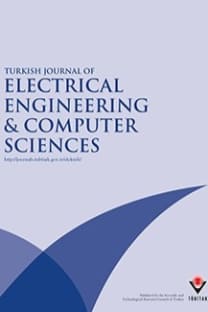Impact of large-scale installation of LED lamps in a distribution system
LED lamps, harmonic distortion, power quality, simulation, losses
Impact of large-scale installation of LED lamps in a distribution system
LED lamps, harmonic distortion, power quality, simulation, losses,
___
- losses across transformers increased with the addition of more LED lamps in the network but decreased across the transmission line. Therefore, a large number of LED lamps is more problematic for transformers. Total distribution network loss can be reduced by replacing the LED lamps. THDV rd Order Figure 11. Voltage distortions of different scenarios with IEC 61000–2–2 standard limit.
- Blanco AM, Parra EE. Effects of high penetration of CFLs and LEDs on the distribution networks. In: 14th International Conference on Harmonics and Quality of Power; 26–29 September 2010; Bergamo, Italy: pp. 1–5.
- Gonos IF, Kostic MB, Topalis FV. Harmonic distortion in electric power systems introduced by compact fluorescent lamps. In: International Conference on Electric Power Engineering; August 29–September 2 1999; Budapest, Hungary: pp. 1–5.
- Radakovic Z, Topalis FV, Kostic M. The voltage distortion in low-voltage networks caused by compact fluorescent lamps with electronic gear. Elec Power Syst Res 2005; 73: 129–136.
- Cunill-sola J, Salichs M. Study and characterization of waveforms from low-watt ( < 25w) compact fluorescent lamps with electronic ballasts. IEEE Trans Power Deliv 2007; 22: 2305–2311.
- Jabbar RA, Dabbagh MA, Muhammad A, Khawaja RH, Akmal M, Arif MR. Impact of compact fluorescent lamp on power quality. In: Australasian Universities Power Engineering Conference; 14–17 December 2008; Sydney, Australia: pp. 1–5.
- Matvoz D, Maksic M. Impact of compact fluorescent lamps on the electric power network. In: 13th International Conference on Harmonics and Quality of Power; 28 September–1 October 2008; Wollongong, Australia: pp. 1–6.
- Watson NR, Scott TL, Hirsch SJJ. Implications for distribution networks of high penetration of compact fluorescent lamps. IEEE Trans Power Deliv 2009; 24: 1521–1528.
- Yong J, Chen L, Nassif AB, Xu W. A frequency-domain harmonic model for compact fluorescent lamps. IEEE Trans Power Deliv 2010; 25: 1182–1189.
- Ulinuha A, Masoum MAS, Islam S. Hybrid genetic-fuzzy algorithm for volt/ var/ total harmonic distortion control of distribution systems with high penetration of non-linear loads. IET Gener Transm & Distrib 2011; 5: 425–439.
- Ronnberg SK, Bollen MHJ, Wahlberg M. Harmonic emission before and after changing to LED and CFLPart I: laboratory measurements for a domestic customer. In: 14th Intel Conference on Harmonics and Quality of Power; –29 September 2010; Bergamo, Italy: pp. 1–6.
- Ronnberg SK, Wahlberg M, Bollen MHJ. Harmonic emission before and after changing to LED and CFL–part II: field measurements for a hotel. In: 14th International Conference on Harmonics and Quality of Power; 26–29 September 2010; Bergamo, Italy: pp. 1–6.
- Kim JH, Ryu MH, Yoon HM, Song EH. A new dimmer for alternating-current directly driven light-emitting-diode lamp. J Cent South Univ 2012; 19: 374–379.
- Uddin S, Shareef H, Mohamed A. Power quality performance of energy-efficient low-wattage LED lamps. Measure- ment 2013; 46: 3783–3795.
- Std. IEC 61000–2–2. Environment - compatibility levels for low-frequency conducted disturbances and signaling in public low-voltage power supply systems. 2002.
- Std. IEC 61000–3–2. Limits for harmonic current emissions (equipment input current≤ 16A per phase). 2009.
- Xu W, Ahmed E, Zhang X, Liu X. Measurement of harmonic impedances: practical implementation issues and solutions. IEEE Trans Power Deliv 2002; 17: 210–216.
- Nassif AB, Yong J, Xu W. Measurement-based approach for constructing harmonic models of electronic home appliances. IET Gener Transm & Distrib 2010; 4: 363–375.
- Abbaspour M, Jahanikia AH. Power quality consideration in the widespread use of compact fluorescent lamps. In: th International Conference on Electrical Power Quality and Utilisation; 15–17 September 2009; Lodz, Poland: pp. 1–6.
- ISSN: 1300-0632
- Yayın Aralığı: Yılda 6 Sayı
- Yayıncı: TÜBİTAK
Serkan ABBASOĞLU, Akinola Adeyinka BABATUNDE
Rajamanickam Manickaraj SASIRAJA, Velu Suresh KUMAR, Sankaralingam PONMANI
Ayhan ÖZDEMİR, İrfan YAZICI, Zekiye ERDEM
MPPT of PV array using stepped-up chaos optimization algorithm
Lihua WANG, Xueye WEI, Yuqin SHAO, Tianlong ZHU, Junhong ZHANG
Capacity allocation of hybrid solar-wind energy system based on discrete probabilistic method
Amorphous core transformers efficiency analysis in Turkish electrical distribution systems
Performance analysis of a 500-kWp grid-connected solar photovoltaic power plant in Kahramanmaraş
Şaban YILMAZ, Hasan Riza ÖZÇALIK
Mahalakshmi MAHADEVAN, Latha SALAI
Group control and identification of residential appliances using a nonintrusive method
